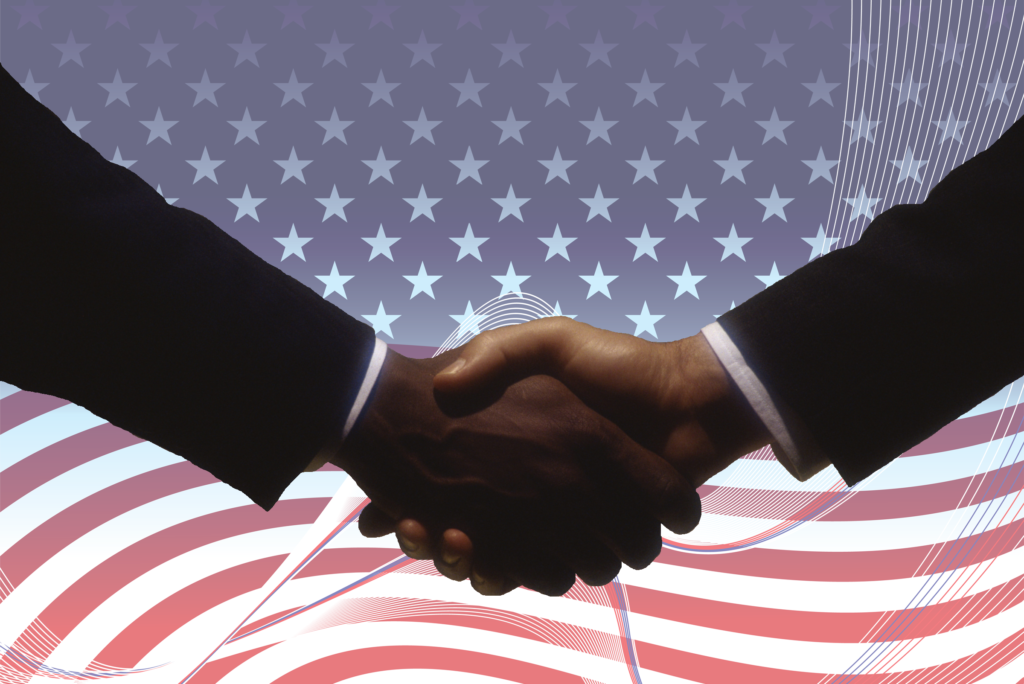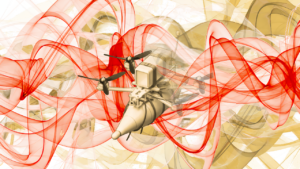Over the past several years, I’ve had occasion to write about the political polarization gripping America and how it adversely affects the business environment. In a recent article, journalist David Leonhardt reports that Washington’s gridlock may be cracking. He explains, “In a country that is supposed to have a gridlocked federal government, the past four years are hard to explain. These years have been arguably the most productive period of Washington bipartisanship in decades. During the Covid pandemic, Democrats and Republicans in Congress came together to pass emergency responses. Under President Biden, bipartisan majorities have passed major laws on infrastructure and semiconductor chips, as well as laws on veterans’ health, gun violence, the Postal Service, the aviation system, same-sex marriage, anti-Asian hate crimes and the electoral process. On trade, the Biden administration has kept some of the Trump administration’s signature policies and even expanded them. The trend has continued, … first with the passage of a bipartisan bill to aid Ukraine and other allies and to force a sale of TikTok by its Chinese owner.”[1] Perhaps, most surprising, he reports, “[When] far-right House Republicans tried to oust Speaker Mike Johnson, … House Democrats voted to save Johnson’s job. There is no precedent for House members of one party to rescue a speaker from the other.” He also notes, “The House advanced another bipartisan bill, on disaster relief, using a rare procedural technique to get around party-line votes.” What’s going on?
According to Leonhardt, this unusual wave of bipartisanship reflects “the emergence of a new form of American centrism.” He writes, “The very notion of centrism is anathema to many progressives and conservatives, conjuring a mushy moderation. But the new centrism is not always so moderate. Forcing the sale of a popular social app is not exactly timid, nor is confronting China and Russia. The bills to rebuild American infrastructure and strengthen the domestic semiconductor industry are ambitious economic policies.” Before celebrating a new era of “country before party,” we must remember that most members of Congress still embrace a “party before country” mentality. They still buy into the notion that a cultural war is being waged in America and, at the center of the battle, is the soul of the nation. Nevertheless, any movement towards across-the-aisle cooperation is welcomed and politicians who have broken party lines to get things done should be saluted.
What’s Going On?
Leonhardt believes that political polarization was the inevitable consequence of events following the end of the Cold War. That was a period of high hopes. As Leonhardt explains, “[During that time, people believed] that market economics had triumphed. By lowering trade barriers and ending the era of big government, the United States would both create prosperity for its own people and shape the world in its image, spreading democracy to China, Russia and elsewhere.” He notes this period was characterized by bipartisanship alternately called the Washington Consensus or neoliberalism. He also notes that it didn’t work out. This new centrism, he insists, is much different from the centrism that guided Washington in those halcyon days. He writes, “The new centrism is a response to these developments. It is a recognition that neoliberalism failed to deliver.” Some people, he observes, call this new centrism “neopopulism.” Leonhardt worries that if an authoritarian Donald Trump is elected president, neopopulism will suffer a setback. Nevertheless, he writes, “The forces that have created neopopulism are unlikely to disappear. They reflect enduring economic and international trends, as well as public opinion.”
One of the variables behind political and cultural divides is age. Political consultant Bruce Mehlman points to six generational gaps currently at play in American politics.[2] Those gaps are:
• Values Gap. Mehlman reports, “Gen Z is less than half as likely as Baby Boomers to say Patriotism, Belief in God & Having Children are ‘very important’ to them.” Those conclusions are drawn from a Public Opinion Strategies poll for NBC News which found the following “very important” results: Patriotism (GenZ 32%/Baby Boomers 76%); Belief in God/Religion (GenZ 26%/Baby Boomers 65%); Having Children (GenZ 23%/Baby Boomers 53%); and American the Best Place to Live (GenZ 33%/Baby Boomers 66%).
• Economics Gap. Mehlman writes, “Just 40% of those ages 18-29 view capitalism positively vs 73% of those 65+. Similarly, 44% of 18-29-year-olds have a positive impression of socialism vs 28% of seniors.” To be fair, there are also differences in how people view capitalism based on gender, ethnicity, level of education, and wealth.
• Voting Gap. If you want to know why America has turned more conservative, it’s because older, conservative voters go to the polls. Mehlman notes, “Younger voters are significantly less-likely to turn out and vote in U.S. elections.” The US Elections Project reports that during the 2016 Trump/Clinton election 71% of voters aged 60 or older turned out to vote while only 43% of 18-29-year-old voters voted. In the 2020 Trump/Biden election, the figures were similar: 78% of voters aged 60 or older turned out while only 53% of 18-29-year-old voters cast ballots.
• Independence Gap. A significant portion of the voting public consider themselves “double haters” when it comes to this year’s presidential election. Mehlman reports that the rise of political polarity has also increased the number of voters who consider themselves independents. He writes, “More than half of Gen-Z and Millennial voters consider themselves political Independents vs 33% of Baby Boomers & 26% of the Silent Generation.”
• Happiness Gap. As Leonhardt noted, neoliberalism ended in disappointment when democratic ideals failed to sweep the world. Today’s younger generations have only known a world in which Russia and China have grown more authoritarian, political polarization is the norm, and climate change is creating chaos. Mehlman reports, “Americans under 30 rating their lives came in 62nd among nations in the World Happiness Report. Americans 60+ ranked 10th. (Iceland & Denmark cracked the top 5 in both age groups).”
• Foreign Policy Gap. Because of the current campus unrest over the situation in Gaza, Mehlman included poll results reflecting how different age groups think about that situation. Using research from Pew, he writes, “31% of adults under 30 say their sympathies lie either entirely or mostly with the Palestinian people, while 14% say their sympathies lie entirely or mostly with the Israeli people. Older Americans, by comparison, are more likely to sympathize with Israelis than Palestinians. Among people ages 65 and older, 47% say their sympathies lie entirely or mostly with the Israeli people vs just 9% who sympathize entirely or mostly with the Palestinians.”
My friend Dr. Thomas P.M. Barnett points out that another way demographic differences are driving American politics is that younger and older voters are looking in different directions.[3] He notes that young voters are looking to the future, which today’s politicians paint as bleak if the opposing party is allowed to govern. On the other hand, older voters look to the past with rose-colored glasses, which is why the phrase “make America great again” has been used by politicians like Bill Clinton, Ronald Reagan, and Donald Trump. Barnett quotes the Canadian scholar Marshall McLuchan who noted, “When faced with a totally new situation, we tend always to attach ourselves to the objects, to the flavor of the most recent past. We look at the present through a rearview mirror. We march backwards into the future.”
Concluding Thoughts
In his article, Leonhardt steps his way through the political minefield that led to the neopopulist present. There are rogues found on both sides of the political aisle, but ideologies are beginning to crack. For example, Daniel Schlozman, a political scientist at Johns Hopkins, told Leonhardt the Republican Party is less homogenous on some issues than it used to be. “That is the very weird paradox of this,” said Schlozman, co-author of The Hollow Parties: The Many Pasts and Disordered Present of American Party Politics. “There is more wiggle room to do ordinary policies like chips and infrastructure even as the party has moved right on the core democracy, will-we-count-the-votes-type questions.”
As Leonhardt notes, “Most congressional Republicans have still not signed onto the neopopulist agenda. The bipartisan majorities have tended to include nearly all Democrats and a minority of Republicans. … In part, this fusing of right and left is a sign that politicians are reacting rationally to voters’ views. Many political elites — including campaign donors, think-tank experts and national journalists — have long misread public opinion. The center of it does not revolve around the socially liberal, fiscally conservative views that many elites hold. It tends to be the opposite. Americans lean left on economic policy. Polls show that they support restrictions on trade, higher taxes on the wealthy and a strong safety net. Most Americans are not socialists, but they do favor policies to hold down the cost of living and create good-paying jobs. These views help explain why ballot initiatives to raise the minimum wage and expand Medicaid have passed even in red states.”
On social issues, especially immigration, voters are more conservative, even though there is overwhelming evidence that immigration helps the U.S. economy. Looking ahead, Leonhardt asks, “What other neopopulist policies might lie ahead?” His answer, “More legislation to address China’s rise and more industrial policy are possible. A bill to ensure that the United States has access to critical minerals like lithium and copper would qualify as both.” He concludes, “For decades, Washington pursued a set of policies that many voters disliked and that did not come close to delivering their promised results. Many citizens have understandably become frustrated. That frustration has led to the stirrings of a neopopulism that seeks to reinvigorate the American economy and compete with the country’s global rivals. As polarized as the country is, its two political parties are at least trying to respond to that reality, and they have found an unexpected amount of common ground.” Let’s hope they find even more common ground in the years ahead.
Footnotes
[1] David Leonhardt, “A New Centrism Is Rising in Washington,” The New York Times, 19 May 2024.
[2] Bruce Mehlman, “Six-Chart Sunday (#17) – Generation Gaps,” email, 19 May 2024.
[3] Thomas P.M. Barnett, “The Story Behind the Illustration (22/54),” 11 May 2024.





